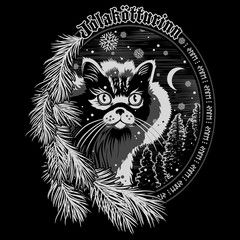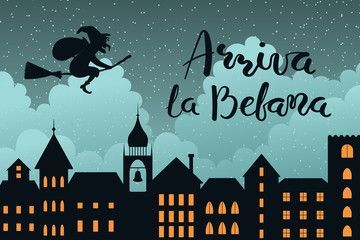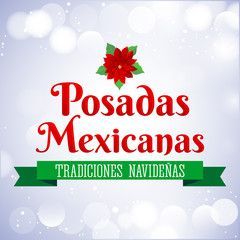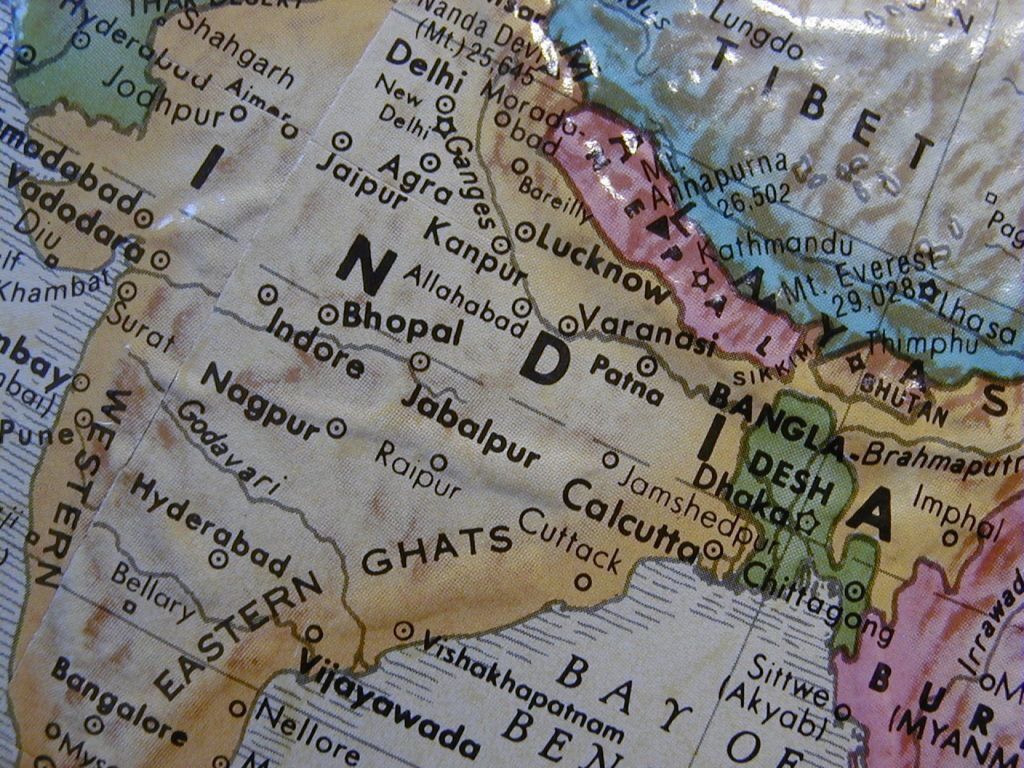Top 10 Most Interesting Christmas Traditions from Around the World

When it comes to Christmas around the world, there’s way more than extravagant merry-making and unabashed capitalism. For instance, did you know that the holly that’s hung at Christmas time symbolizes the suffering of Christ? That’s right, its sharp leaves represent the crown of thorns worn by Christ, and the red berries represent, you guessed it – the blood he shed. In fact, the Germans call holly “Christdorn,” which literally translates to “Christ thorn.”
Every culture has its own festive ways when it comes to celebrating Christmas, some stranger than others. Following are some of the most interesting ones we’ve found. Enjoy!

1. “God Jul!” – From Sweden
The Yule Goat or “Gävle Goat” known in Sweden as “Julbock,” which translates into English as “Yule Buck,” has a history that extends back to at least the 11 th century. Its first references are that of a man-sized goat figure commanded by Saint Nicholas and endowed with the ability to tame the devil.
As you may suspect, there have been many changes to the Yule Goat over time. Young men would frequently dress up as the goat figure in the 17 th century, walk around playing practical jokes, and demanding presents.
By the nineteenth century, the goat had evolved into a kind and docile character. Men in the household would dress up as the goat and present gifts to the entire family in place of Father Christmas. Giant replicas of these goat decorations made of straw and red ribbons are made in larger cities and can be found today. In fact, the enormous goat, 42 feet high and weighing close to 4 tons, is built in the same location each year, at Slottstorget (Castle Square) in Gävle, Sweden. From the first Sunday in Advent until after the New Year when it is taken down, viewers may even watch a live stream.

2. “ Geseënde Kersfees!” – From South Africa
Okay, this one just may have you reaching for some heavily spiked eggnog! For their festive feast, many South Africans consume fried Emperor Moth caterpillars. Insects, a fantastic source of protein, are gathered around Christmas and kept to be eaten throughout the winter. But during the Christmas season, they are cooked fresh as part of the holiday festivities. Festive fried caterpillars might appear to be one of the stranger Christmas customs, but these caterpillars aren’t your typical garden variety.
Apart from being incredibly delicious for those who are accustomed to their unique flavor, all those who ingest the Pine Tree Emperor Moth, also known as the Christmas caterpillar, will have a little more luck in the upcoming year thanks to its festive coloring. So, now we know where Bear Grylls spends his Christmas!
3. “Maligayang Pasko!” – From the Philippines
The “Ligligan Parul,” also known as the Giant Lantern Festival, is held annually in San Fernando and has glistening parols (lanterns) that represent the Star of Bethlehem. Thousands of rotating lights make up each parol, which illuminates the night sky. San Fernando is now known as the “Christmas Capital of the Philippines,” thanks to the celebration.
In the Philippines, early masses called “Misa de Gallo” or “Simbang Gabi” are celebrated to commemorate Christmas. The Feast of the Three Kings is observed on this day, which is the first Sunday in January, after the final mass.

4. “Fröhliche Weihnachten!” – From Austria
This has got to be, by far, the scariest Christmas tradition we’ve come across. St. Nicholas brings presents to good children in Austria and Bavaria, while Krampus, a horned, anthropomorphic, half-goat, half-man figure, makes his rounds to punish naughty children. To let off steam and frighten young kids back into line, some men dress up as the spooky character for a “Krampuslauf,” or “Krampus run,” when they march through the streets.
Krampus, St. Nicholas’ wicked helper, scares children who have misbehaved. Assisting Saint Nicholas or Santa Claus, the pair visit children on the night of December 5th with Saint Nick rewarding the well behaved children with gifts such as oranges, dried fruit, walnuts and chocolate. The naughty kids only receive punishment from Krampus with birch rods. According to Austrian folklore, Krampus kidnaps the naughtiest kids and takes them away in his sack, while St. Nicholas blesses good boys and girls. Young men dress up as Krampus in the first week of December and frighten children by clattering bells and chains. This takes being on the naughty list to an entirely new level!

5. “Gleðileg jól!” – From Iceland
The Swedes may celebrate Christmas with their giant goat, but Icelanders have, wait for it… a giant cat! No Icelander, young or old, is unaware of this mythological figure. One of the many bizarre spirits and creatures of Christmas is the Yule Cat, known as “Jólakötturinn.” This is a huge cat that devours people who have not received new clothes to wear before Christmas eve. So if you’re thinking about spending Christmas in Iceland, be sure to pack those new holiday threads or else you just may end up as cat food! And you may want to refrain from saying, “here, kitty kitty” if you see a cat while visiting!
During the holiday season, “Jólakötturinn” is rumoured to lurk about the snowy countryside. Farmers would traditionally utilize the Yule Cat as a kind of motivation for their employees: those who put in the extra effort would get new garments, while those who didn’t would get devoured by the enormous cat-like beast. To avoid the unpleasant end of coming out in nature’s litter box, it is now a tradition in Iceland for everyone to get new attire for Christmas.
6. “God Jul!” – From Norway
In Norway, there’s a sweep on all brooms in the house on Christmas Eve. According to Norwegian culture, witches and bad spirits arrive on Christmas Eve. Christmas Eve is the day when evil spirits and witches fly around seeking mischief and other nonsense, according to Norwegian legend. As brooms are witches’ favored form of transportation, it is customary for Norwegian households to store any sweeping implements out of the witches’ reach.

7. “Buon Natale!” – From Italy
Now, Sweden and Iceland might have a giant goat and a giant cat to instill fear into the hearts of the young and old and make them think twice about being naughty each Christmas, but Italy has “Befana.” Folklore has it that a witch by the name of Befana makes a visit to every kid in Italy on the night before the Epiphany (January 6th) to stuff their stockings with sweets and, if they’ve been nice, give them presents. La Befana has been flying around the world on her tattered broomstick before Kris Kringle could so much as grow a gotee. The witch has been in Italian tradition at least since the eighth century as part of the Epiphany. While La Befana distributes gifts to good kids, you could find a lump of coal in your bed if you were bad, so be careful! Befana arrives via the chimney, much like Father Christmas, and the children who live there leave her gifts, usually wine and regional specialties that all those poor parents have to eat and drink when the kids are back in bed!

8. “Kurisumasu ni wa kentakkii!” – From Japan
Christmas in Japan is a time for friends and couples to get together for dinner at a special place, throw parties, and generally enjoy themselves. KFC is that location. The first KFC Christmas advertisement was introduced in 1974 when the fast food chain sold a bucket of its famed fried chicken and a bottle of wine and suggested using it for an adult-only Christmas party. In what has become a national custom, around 3.6 million families treat themselves to Kentucky’s famous fried chicken during the Christmas season in Japan. So it’s safe to say that KFC has a busy holiday season.

9. “Feliz Navidad!” – From Mexico
To recount the Christmas tale, churchgoers perform pastorales (Shepherd’s Plays) all around Mexico. The nine posadas of Advent are a very well-liked Mexican Christmas custom, and they’re partially to thank for Guadalupe-Reyes’ reputation as a party marathon. Posadas, unique Christmas social events, are customarily held every evening from December 16 through December 24.
With Las Posadas, a religious procession that mimics Mary and Joseph’s trip, the Christmas season in Mexico gets underway early in December. Additionally, the striking red poinsettia flowers are utilized nationwide in Christmas décor arrangements. Spanish Christmas melodies, magnificent nativity displays, dancing, and fireworks are all featured. While customs like Christmas trees and Santa have made an appearance at Mexican celebrations, the holidays are still deeply entrenched in Spanish and indigenous cultures.
10. “Ayamkom Saeedah!” – From Iraq
Christmas celebrations are calm and quiet in Iraq. The municipal council of Baghdad decorates a number of opulent hotels and restaurants and sets Christmas trees at crossroads. The population celebrates Christmas by participating in numerous Assyrian traditions and going to church. On Christmas Eve, it’s common practice to burn bonfires in the courtyards of homes.
The majority of Christmas festivities in Iraq don’t seem to have anything to do with the holiday’s modern religious roots. The most widely recognized representation of it in the Middle East is typically a festively adorned Christmas tree, a throwback to winter solstice festivities.
So, there you have it! We hope you enjoyed reading about how Christmas is celebrated in some countries around the world!
The post Top 10 Most Interesting Christmas Traditions from Around the World appeared first on intransol.











